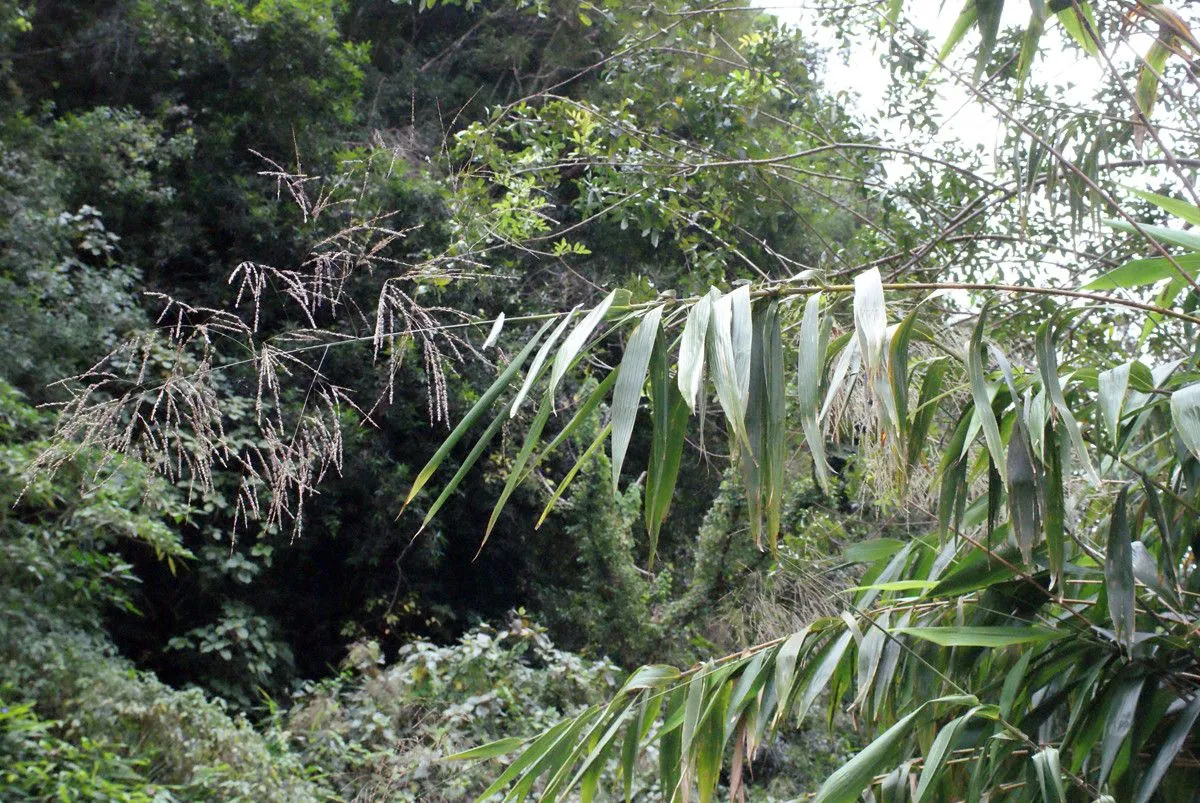
Author: (Desv.) Stapf
Bibliography: D.Oliver & auct. suc. (eds.), Fl. Trop. Afr. 9: 114 (1917)
Year: 1917
Status: accepted
Rank: species
Genus: Sorghum
Vegetable: False
Observations: Africa, Indian Subcontinent
Sorghum, scientifically known as Sorghum arundinaceum, is an important plant species belonging to the Poaceae family. Originating from Africa, this plant has spread its roots far across diverse regions, including the Indian Subcontinent.
Sorghum arundinaceum demonstrates a remarkable adaptability to various soil types and climatic conditions, making it a resilient and valuable crop in agricultural practices. It thrives particularly well in semi-arid regions where other crops might struggle, showcasing its drought-resistant capabilities.
This species is versatile and serves multiple purposes. It is a vital source of food for human consumption in many parts of the world, particularly in Africa and Asia. Sorghum grains are rich in nutrients, providing essential vitamins and minerals. Additionally, sorghum holds significant economic value in the production of animal feed, due to its high nutritional content for livestock.
Beyond its agricultural applications, Sorghum arundinaceum exhibits potential in various industrial uses. It is utilized in the production of biofuels, which is increasingly important as the world shifts towards renewable energy sources. Its by-products are often used in creating biodegradable materials, contributing to environmental sustainability.
The documentation of Sorghum arundinaceum’s characteristics and uses can be traced back to the work of botanists like D. Oliver and successors, who highlighted its significance in the Flora of Tropical Africa in 1917. This early recording underscores the long-standing recognition of sorghum’s value in both ecological and economical contexts.
Overall, Sorghum arundinaceum stands out not only for its adaptability and resilience but also for its comprehensive contributions to food security, livestock nutrition, and renewable resources, making it an indispensable plant species across different regions and industries.
Eng: sorghum, common wild sorghum, cameroon grass, kamerun grass, kavirondo sorghum, tunis grass
Ara: hashish el-faras
Fra: mil sauvage
Yor: oka iye
En: Sorghum, Common wild sorghum, Cameroon grass, Kamerun grass, Kavirondo sorghum, Tunis grass, Broom-corn
Ar: Hashish el-faras
Fr: Mil sauvage, Sorgho d’Alep, Herbe de Cuba, Maïs cafre
Yo: Oka iye
Taken Feb 19, 2020 by Chumby Natalia (cc-by-sa)
Taken Jan 15, 2014 by Tela Botanica − Liliane Roubaudi (cc-by-sa)
Taken Jan 15, 2014 by Tela Botanica − Liliane Roubaudi (cc-by-sa)
Taken Jan 15, 2014 by Tela Botanica − Liliane Roubaudi (cc-by-sa)
Taken Jan 15, 2014 by Tela Botanica − Liliane Roubaudi (cc-by-sa)
Taken Jan 15, 2014 by Tela Botanica − Liliane Roubaudi (cc-by-sa)
Taken Jan 15, 2014 by Tela Botanica − Liliane Roubaudi (cc-by-sa)
Taken Jan 15, 2014 by Tela Botanica − Liliane Roubaudi (cc-by-sa)
Taken Jan 15, 2014 by Tela Botanica − Liliane Roubaudi (cc-by-sa)
Taken Jan 15, 2014 by Tela Botanica − Liliane Roubaudi (cc-by-sa)
Taken Jan 15, 2014 by Tela Botanica − Liliane Roubaudi (cc-by-sa)
Taken Jan 15, 2014 by Tela Botanica − Liliane Roubaudi (cc-by-sa)
Taken Jan 15, 2014 by Tela Botanica − Liliane Roubaudi (cc-by-sa)
© copyright of the Board of Trustees of the Royal Botanic Gardens, Kew.
© copyright of the Board of Trustees of the Royal Botanic Gardens, Kew.
© copyright of the Board of Trustees of the Royal Botanic Gardens, Kew.
Growth form>: Bunch
Growth habit>: Graminoid
Growth rate>: Rapid
Ph maximum: 7.5
Ph minimum: 5.5
Family: Myrtaceae Author: (F.Muell.) K.D.Hill & L.A.S.Johnson Bibliography: Telopea 6: 402 (1995) Year: 1995 Status:…
Family: Rubiaceae Author: Pierre ex A.Froehner Bibliography: Notizbl. Bot. Gart. Berlin-Dahlem 1: 237 (1897) Year:…
Family: Sapindaceae Author: Koidz. Bibliography: J. Coll. Sci. Imp. Univ. Tokyo 32(1): 38 (1911) Year:…
Family: Asteraceae Author: A.Gray Bibliography: Pacif. Railr. Rep.: 107 (1857) Year: 1857 Status: accepted Rank:…
Family: Fabaceae Author: Medik. Bibliography: Vorles. Churpfälz. Phys.-Ökon. Ges. 2: 398 (1787) Year: 1787 Status:…
Family: Aspleniaceae Author: (Cav.) Alston Bibliography: Bull. Misc. Inform. Kew 1932: 309 (1932) Year: 1932…